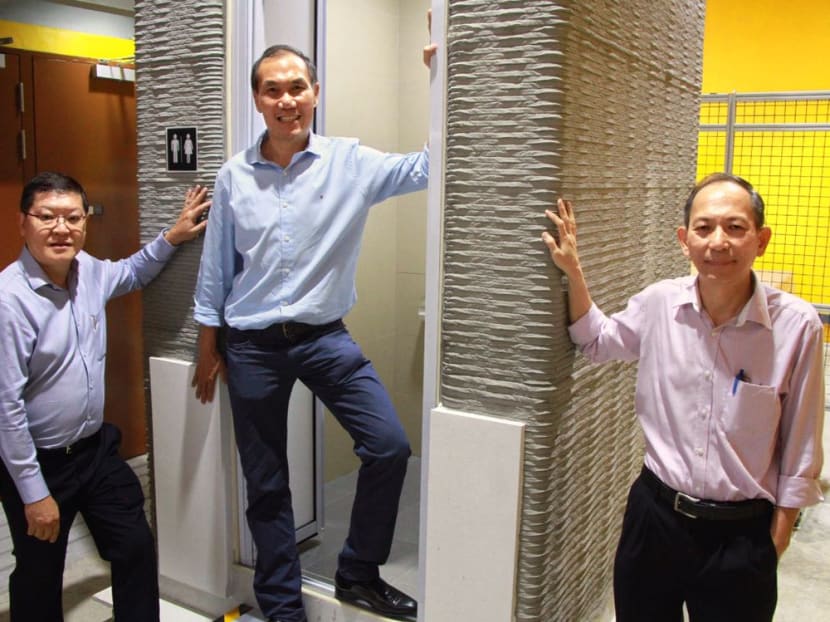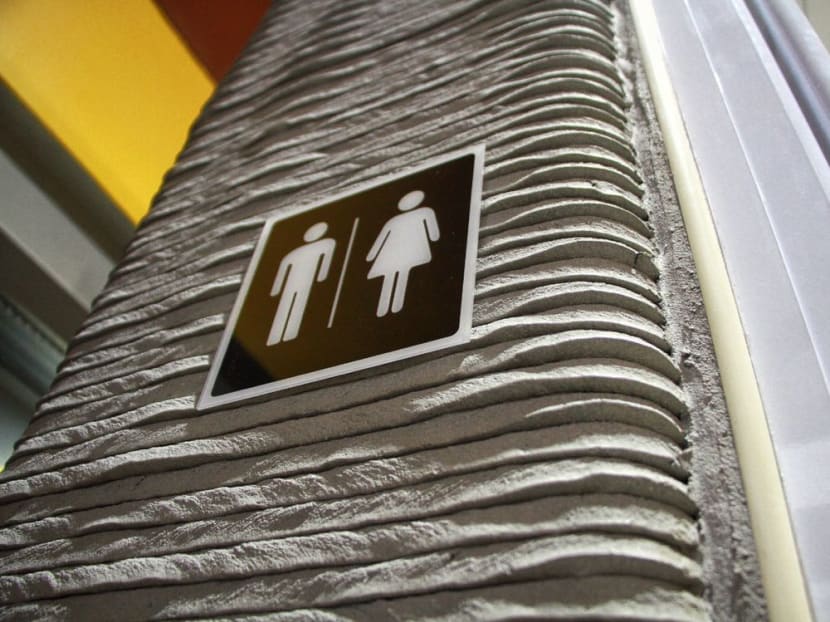How Singapore researchers 3D-printed a bathroom unit in 12 hours
SINGAPORE — Bathrooms of future homes in Singapore could be built more quickly, thanks to 3D printing.

(L-R) Sembcorp team lead Er Lie Liong Tjen, NTU Singapore Centre for 3D Printing’s Dr Tan Ming Jen and Dr Wong Teck Neng with their first 3D-printed prefabricated bathroom unit.
SINGAPORE — Bathrooms of future homes in Singapore could be built more quickly, thanks to 3D printing.
Researchers from Nanyang Technological University (NTU) have found a way to build prefabricated bathroom units, without fittings such as pipes and the toilet bowl, within 12 hours using a 3D printer.
The technology could shave off nearly half the cost of prefabricating using concrete casting, which is estimated to be S$6,000 to S$7,000 per unit, said the team’s principal investigator Tan Ming Jen. The cost could be reduced further if production is scaled up, Dr Tan told reporters on Wednesday (May 22).
Fly ash waste — which is produced when rubbish is incinerated — also forms part of the special concrete mix used for the 3D-printed bathrooms, helping to reduce their carbon footprint.
The structure is up to 30 per cent lighter, which helps to lower transport costs and wastage of materials.

The structure has met most industrial requirements, such as for strength and robustness. It is undergoing tests for fire resistance and toxicity emissions, for which the team is looking to obtain approval in the next three months.
Although the researchers eventually hope to roll out the technology for a housing project, they do not have a timeline to commercialise the technology, which is protected by a Technology Disclosure jointly-owned by NTU and its partner Sembcorp.
MORE ADVENTUROUS DESIGNS IN FUTURE
The project is part of a 10-year collaboration between NTU and Sembcorp, which was inked when the NTU’s Singapore Centre for 3D Printing was launched in December 2016.
Countries such as China have used 3D printing for structures such as bridges, and Dr Tan said: “To the best of our knowledge, we are the first (to 3D-print bathrooms).”
The construction of a bathroom is a “complicated” and “time-consuming” process, and he said that it is often a reason for delays in building projects.
Besides the time taken to construct an unfurnished bathroom, it takes about five days to install fittings, tiles and other finishing touches.
The team took slightly over three years to develop the 3D-printed bathroom.
A challenge was “getting the science right” — the team had to match the flow rate of the printer’s nozzle to the time the material takes to harden, so that the structure does not collapse during the printing process, said Dr Tan.
Another advantage of 3D printing is that it allows concrete to be customised and surfaces to be curved, said engineer Lie Liong Tjen, the team lead from Sembcorp Design and Construction.
This will allow for more adventurous designs in future, said Dr Tan.
“In the future, we can even incorporate attachable balconies, movable walls that can be changed… according to the needs of the family,” he said.






